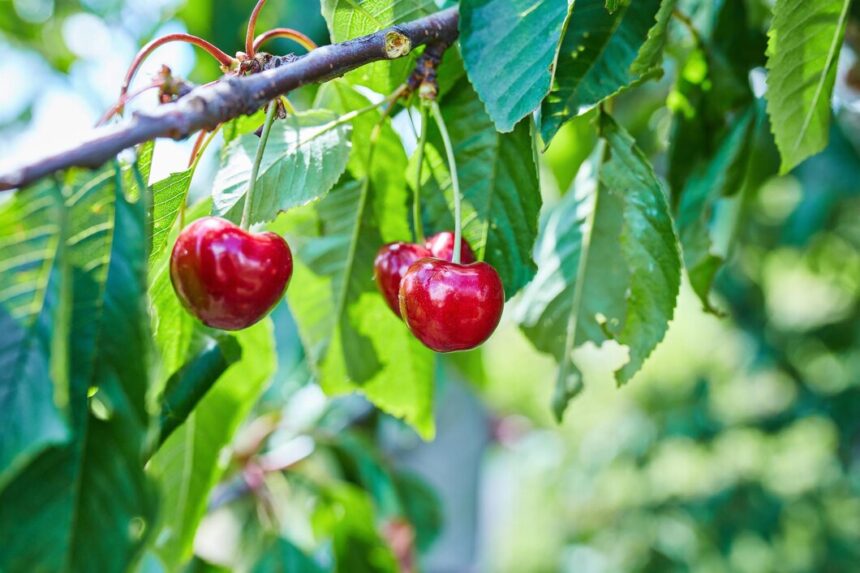Cherry leaf spot (Blumeriella jaapii) is a common fungal disease that affects cherry trees, particularly sweet cherries (Prunus avium) and sour cherries (Prunus cerasus). Early detection is crucial to prevent the spread of the disease and minimize damage to the trees and fruit. Here are ten early signs to watch for that indicate your cherries may have cherry leaf spot:
- Purple or Red Spots on Leaves: Look for small, purple or red spots on the upper surfaces of cherry tree leaves. These spots may initially appear as tiny flecks and gradually enlarge over time.
- Yellowing or Browning of Leaves: Infected leaves may develop yellow or brown areas around the purple spots, indicating damage to the leaf tissue caused by the fungal infection.
- Premature Leaf Drop: Cherry leaf spot can cause infected leaves to prematurely drop from the tree, especially during periods of heavy rain or humid weather conditions.
- Circular Lesions on Leaves: As the disease progresses, the purple spots on cherry leaves may develop into circular lesions with distinct margins. These lesions often have a dark brown or black center.
- Leaf Curling or Distortion: Infected leaves may exhibit curling or distortion of their normal shape. This distortion is a response to the fungal infection affecting the leaf structure.
- Fruit Lesions: In advanced stages, cherry leaf spot can also affect the fruit, causing small, dark lesions or spots on the surface of cherries. These spots may render the fruit unmarketable or unsuitable for consumption.
- Twig and Shoot Blight: In severe cases, the fungal infection can spread to twigs and young shoots, causing dieback and affecting overall tree health and vigor.
- Fungal Spores (Fruiting Bodies): Under humid conditions, look for the presence of fungal spores (acervuli) on the underside of infected leaves. These appear as small, dark specks and are a sign of active disease development.
- Stunted Growth: Infected cherry trees may exhibit stunted growth due to reduced photosynthetic capacity caused by leaf damage and premature leaf drop.
- General Tree Weakness: Overall, cherry trees affected by cherry leaf spot may appear weakened, with reduced vigor and susceptibility to other pests and diseases.
Managing Cherry Leaf Spot
Early detection and proactive management are key to controlling cherry leaf spot. Here are some recommended practices:
- Prune and Remove Infected Leaves: Prune and remove infected leaves and branches to reduce the spread of fungal spores.
- Improve Air Circulation: Ensure adequate spacing between trees and prune to improve air circulation, which helps reduce humidity and fungal growth.
- Fungicidal Sprays: Apply fungicidal sprays according to recommended schedules and guidelines, especially during periods of wet weather.
- Mulching and Sanitation: Maintain clean orchard floors by removing fallen leaves and debris, and apply mulch to suppress fungal spores and promote tree health.
By monitoring your cherry trees regularly and taking prompt action at the first signs of cherry leaf spot, you can protect your trees from serious damage and ensure a healthy harvest of cherries for years to come.
Join 'Farmers Mag' WhatsApp Channel
Get the latest Farming news and tips delivered straight to your WhatsApp
CLICK HERE TO JOIN






